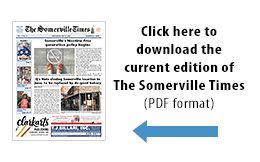
Brown School maintains “School of Recognition” designation; Kennedy School ranks eighty-eighth in accountability compared to similar K-8 schools in state
The Massachusetts Department of Elementary and Secondary Education (DESE) yesterday released results of its spring 2019 state-wide assessment, the Next-Generation MCAS. It was the second year that students in grades 3-8 were assessed using the new exam, while high school tenth grade students took the Next-Generation MCAS for the first time this past spring, completing the state’s transition from the Legacy MCAS to the Next-Gen MCAS.
With spring 2019 being the first administration of the Next Gen MCAS to tenth grade students, no year-over-year comparisons are possible this year at this grade level. However, the Next Gen ELA and Math tests were aligned to Legacy grade 10 in this first year, and passing standards will remain the same for at least the first two classes of tenth graders to take the Next Gen exam. Graduation and scholarship eligibility standards and rules are also the same as the Legacy MCAS standards for at least the next two graduating classes. State-wide, 87% of students in the tenth grade passed the next-generation MCAS testing requirement in all three subjects on their first attempt, the same percentage as last year’s results with the Legacy exam.
According to the spring 2019 Next-Gen results released by the Department, overall, Somerville Public Schools (SPS) continues to make progress toward its targets and is doing so at a higher rate than last year. This year, SPS met a significantly larger percentage of the District’s performance targets than last year (52% vs. 36%), indicating that the District’s focus on developing systems that address equity and opportunity gaps is producing positive results, and that the District is providing students who have struggled the most with the academic supports they need. The Brown School, Kennedy School, West Somerville Neighborhood School, Winter Hill Community Innovation School, and Somerville High School met the majority of their targets under the state’s new accountability system.
· Brown School met 92% of its targets
· Winter Hill Community Innovation School met 86% of its targets
· Kennedy School met 71% of its targets
· WSNS met 68% of its targets, and
· SHS met 55% of its targets under the new system.
The Brown School maintained its designation as a School of Recognition, one of 67 schools from across the Commonwealth recognized as such, for demonstrating high growth. They were again in the ninety-ninth accountability percentile this year compared to similar schools in the state. The John F. Kennedy School was in the 88th accountability percentile compared to similar K-8 schools in Massachusetts, and was one of three schools in the district designated as “Making substantial progress toward targets,” along with the West Somerville Neighborhood School and the Winter Hill Community Innovation School.
“It’s encouraging to see that we are continuing to show good growth across the district. Many of our schools are making substantial progress toward meeting their targets. We also continue to see positive outcomes in some of our other indicators such as increased participation in AP classes at Somerville High School, maintaining a strong graduation rate, and a steadily declining dropout rate,” stated Superintendent of Schools Mary Skipper. “We are now seeing the positive results of some of the systems we have put in place, such as our expanding work on developing and utilizing Student Insights, to make sure that we know how to meet the unique needs of every student. We also know that our continued commitment to the arts, music, sports, and out-of-school-time partnerships are important factors in why our students continue to make such good academic progress. We are heading in the right direction, but we will not be fully satisfied until we close the opportunity gap. We look forward to continuing our focused work on equity in action this year and in the coming years, and to seeing the outcome of this important work.”
“Thanks to the hard work of Somerville Public Schools teachers, staff, and the students themselves we continue to see growth at schools throughout the district,” commented Mayor Joseph A. Curtatone. “While we celebrate these successes, we will also continue to look for ways to help our students excel and support educators in preparing students for the challenges and opportunities that a rapidly evolving world offers.”
Overall, results show that as a district Somerville had above average growth for most subgroups in English Language Arts (ELA) and in Math for K-8. Student Next-Gen MCAS scores in ELA and Math fall into the same four categories as last year of Exceeding Expectations, Meeting Expectations, Partially Meeting Expectations, and Not Meeting Expectations, which measure whether or not a student is on track to meet grade-level expectations. In math, 52% of Somerville High School students Met or Exceeded Expectations, while 58% of SHS students Met or Exceeded Expectations in ELA. Other school highlights across the district include the following:
· 89% of Brown School students overall Met or Exceeded Expectations in ELA; 80% Met or Exceeded Expectations in Math, up 6 percentage points from last year
· 70% of Kennedy School students overall Exceeded Expectations in Math, up 2 percentage points from last year; 85% of Grade 6 students Met or Exceeded Expectations in Math
· 63% of WSNS Grade 8 students Met or Exceeded Expectations in ELA; 66% Met or Exceeded Expectations in Math
· 60% of Argenziano Grade 6 students Met or Exceeded Expectations in Math; 58% Met or Exceeded Expectations in ELA
· 58% of Healey School Grade 8 students Met or Exceeded Expectations in ELA
· 55% of ESCS Grade 5 students Met or Exceeded Expectations in ELA
· 53% of Winter Hill Grade 3 students Met or Exceeded Expectations in ELA
SHS continues to make progress in reducing its school dropout rate, which fell another 0.3 percentage points to an all-time low of 1.2% in 2018. The school’s four-year graduation rate remains steady at a current rate of 86.7%.
Somerville also continues to be among the highest-performing urban districts in the Commonwealth. Compared to all 24 urban districts, Somerville ranks 2nd in Student Growth Percentile (SGP) in ELA in grades 3-8 combined with an SGP of 52.5, and 5th in grade 10 ELA with an SGP of 49.0. At 53%, Somerville also ranks 3rd in percentage of 10th grade students across the district who are Meeting or Exceeding Expectations in ELA.
“As a district and as a community, we have placed an emphasis on supporting the whole child. There are many factors that impact a student’s ability to learn,” said School Committee Chair, Carrie Normand. “The investments we have made over the last several years in early education, mental health support, social-emotional learning, out-of-school-time partnerships, and a variety of innovative programs across the district are making an impact. We’re excited to continue this work with the goal of making sure that every SPS student is ready to successfully embark on their post-high school journeys.”
“Our continued growth and progress demonstrates that we are committed to approaching the work that we do every day through a lens of equity, ensuring that we are helping all students in our district thrive,” added Assistant Superintendent of Schools, Chad Mazza. “By meeting students where they’re at and providing them with the individualized support they need, we are not only helping them acquire the skills to succeed today, we are also fostering a growth mindset that will help them succeed in their future endeavors.”
School and District Classifications
In the Next Generation MCAS assessment, schools and districts are placed into two broad classification categories: Schools not requiring assistance or intervention, and Schools requiring assistance or intervention. Schools identified as Meeting or Exceeding Targets, making Substantial Progress toward Targets, making Moderate Progress toward Targets, or making Limited or No Progress toward Targets fall into the first category; schools identified in need of Focused/targeted support or Broad/comprehensive support fall into the category of Schools requiring assistance or intervention. Schools with low participation on the MCAS exam (below 95 percent) by subgroup and by subject using a two-year participation rate average are automatically designated as “needing focused/targeted support”. ESCS and Next Wave Jr. High were classified as such due to low participation rates by specific subgroups on the MCAS exam. Districts are now categorized based on the performance of the district as a whole (and not its lowest-performing school). School and District accountability reports list the overall classification, the reason for the classification, and the school or district’s progress toward meeting improvement targets, calculated using a weighted formula that includes all applicable indicators.
Accountability Categories
The Next Generation MCAS includes additional indicators that factor into a school’s accountability designation. Chronic absenteeism, English language proficiency, and for high schools only, the percentage of students completing advanced coursework are now also factored into the weighted calculation of how a school is progressing toward meeting their target goals.
















Reader Comments